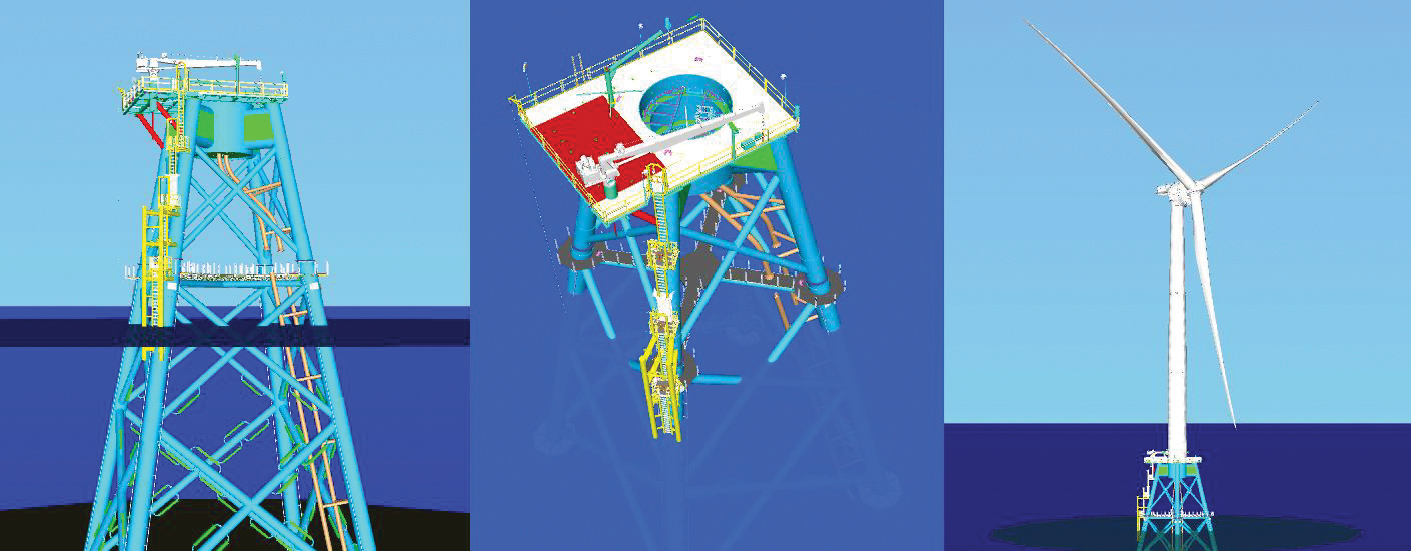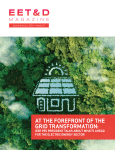Flash flooding in high deserts, roads melting in the summer heat, rare Mediterranean hurricanes, wildfires in tropical paradises — the recent headlines are chilling for anyone. But knowing the impact of these calamities as they relate to electric utilities makes the headlines particularly alarming for those in the utility industry.
Climate change events — combined with demand growth, shifting requirements and antiquated electric infrastructure – are wreaking havoc. The challenges are too big to be ignored, and utilities are at a crossroads. Changes must occur to ensure the future sustainability and resiliency of our electrical grids — changes, in part, informed by data coming from digital technology and transformation.
The perfect (electrical) storm
Much of the infrastructure that makes up electrical grids is old and/or outdated. For instance, in the United States, experts estimate that over 70% of the components of the U.S. grid are more than 25 years old. This weakness makes grids even more vulnerable to the intense weather conditions brought on by climate change. Moreover, electric grids were, by in large, built to bring energy from where electricity is generated (typically by fossil fuels) to where electricity is consumed. With the increase of renewable energy sources, coupled with the new types of demands for electricity, such as electric vehicles- (EVs), the grid’s underlying purpose is quickly becoming outdated. Massive change in investments for infrastructure, people, processes and technologies are needed to make it cleaner and greener.
Utilities themselves are struggling to adapt to change. From new electrification and load demands to equipment upgrades and regulatory obligations, changes that traditionally happened in 20 years might now be happening in a handful of months. Today’s utilities need to address these quickly changing external requirements, as well as their own internal operations. Expectations of customers have been revolutionized based on today’s business-to-consumer online business experiences. Since much of the deep knowledge in the workforce has or is about to retire, a utility’s technology platforms must also be cutting-edge to attract and retain newer employees.
But funding for vital changes continues to be challenging. Given the convoluted web of local, state and regional utility regulators that control their purse strings, public utilities need hard numbers to justify the rate recovery increases that fund grid upgrades. Capital expenditures are needed, for example, to replace transformers that were never intended to serve all the new EVs tapping into the electrical grid or cannot cope with the sharp rise in home electrification.

The Block Island Wind Farm will reduce the cost of future offshore wind projects by providing a viable design and fabrication process.
Image courtesy of Keystone Engineering.
Now or never
These challenges have created a perfect storm — but one with a silver lining. We have a now-or-never moment to modernize the grid, making it more sustainable and resilient for the decades to come. And data is the basis for that change. Buried within every infrastructure asset and every project is data — data waiting to be unlocked, understood and used, and data delivering the insights that empower infrastructure intelligence. From connecting critical information and workflows to leveraging digital-twin-powered and AI-driven advancements, infrastructure intelligence is how we will build a more sustainable and resilient electrical grid. With data as the foundation and digital capabilities as the building blocks, accelerating infrastructure intelligence can address some of the biggest challenges facing our electrical grids.
Connecting digital workflows within an organization and across disciplines gives stakeholders the information that they need to make the necessary changes. This information empowers data-driven, real-time decision-making and provides irrefutable data needed for change.
Getting this information requires technology solutions that facilitate real-time data exchange, creating a connected data environment for an evolved electrical grid. By leveraging the data stemming from these solutions, utilities can share data to improve their transparency — both internally and externally — while enhancing their customers’ experiences. In addition, cutting-edge technology can attract and retain a younger, eager workforce. More importantly, the information from these solutions can help utilities quantify and communicate needs with regulators to make the bold grid upgrades that are needed to build sustainability and resiliency into today’s electrical grids.
Digital technology and workflows for electricity production and delivery are enabling organizations to improve project delivery, optimize operations, increase grid resilience and safeguard “last-mile” energy networks.

Keystone Engineering designed jacket-type substructures for five wind turbine generators.
Image courtesy of Keystone Engineering.
Improve project delivery
Digital solutions are essential for the expedient delivery of renewable energy projects that support our transition to cleaner energy production. Digital technology enables organizations to analyze, design, simulate and collaborate more intelligently and effectively. Project workflows are enhanced using integrated, cloud-ready, scalable and adaptable multidiscipline design and analysis.
Connected, digital project delivery solutions also provide end-to-end workflows and data. By unifying multidiscipline teams and connecting the project delivery supply chain, data integrity is enhanced, leading to improved project performance and increased productivity.
An example is Keystone Engineering, who used digital solutions to effectively design the first offshore wind farm in the U.S. The firm was tasked with designing the substructures of five wind turbine generators for the USD 290 million Block Island Wind Farm off the coast of Rhode Island.
Keystone used engineering infrastructure software solutions to optimize design, mitigate risk, minimize steel weight and reduce fabrication and installation costs. By performing multiple simulations and design iterations simultaneously, they were able to shorten the design cycle by 50% while lightening the weight of the substructure. Optimizing the amount of steel needed for the foundations saved the client 20% in installation costs.
Optimize operations
Organizations are increasingly turning to digital twins to improve asset health, system performance, reliability, safety and sustainability. Using sophisticated cloud-based technology to connect the physical and virtual worlds, digital twins combine disparate data created by diverse design, construction, inspection and maintenance applications into a federated environment. It gives utilities the insights needed for more accurate, data-driven decisions and business processes that make their infrastructure more sustainable and resilient.
For example, digital twins can provide increased visibility into a utility’s operational data — enabling them to determine how assets are performing and what changes are needed. Maintenance teams can work smarter to ensure accurate reporting and compliance, improve safety and reduce maintenance costs. Moreover, this digital record of current conditions and changes can be used to inform future inspections, reporting and operations.
For instance, hydroelectric power from Washington’s 160-foot-high Diablo Dam feeds the greater Seattle area power grid. To improve safety and efficiency while minimizing risks, Seattle’s electric utility, Seattle City Electric (SCL), tasked engineering firm HDR to create a digital twin as part of the utility’s physical inspections. HDR used aerial and drone surveying and reality modeling solutions, as well as AI and machine learning algorithms, to create a digital twin of the dam that is accurate to within two centimeters.
This digital twin of the dam serves as the baseline of the structure, helping SCL improve and visualize the surveillance and monitoring of the dam. Real-time monitoring provides the right information at the right time for proactive risk management, safety and predictive maintenance applications.
Increase grid resilience
Digital technology also helps ensure the integrity and resiliency of transmission and distribution systems, big or small. Utilities are relying on digital solutions — from the digitization of previous manual surveys and design work to the use of reality capture models, model-based clash detection and automated workflows — to replace traditional error-prone, time-consuming manual methods.
By using digital means to manage the delivery of capital investments related to the refurbishment, replacement and construction of assets, utilities are lowering network operating costs. These solutions enable timely and safe design decisions, resulting in reduced outage times and a more resilient network.
For example, Australia’s Essential Energy provides electricity services to 95% of homes and businesses in New South Wales, including many rural and remote communities. To lower network operating costs and unlock value across small capital energy projects, the utility is using reality modeling-based solutions to digitize previous manual survey, design and construction workflows for some of its rural substation sites.
By automating previously manual processes, Essential Energy has reduced its substation design hours as well as its environmental impact. The utility’s new workflows have improved quality and efficiencies, reduced rework associated with design and construction errors, enhanced safety and minimized travel to remote substation locations. As a result, project costs have been lowered by 50% and design-related travel by 80%.
Safeguard last-mile energy networks
Digital solutions are also helping utilities ensure the integrity of the overhead infrastructure that is at the end of their energy distribution and communications systems. The challenges associated with safeguarding this last mile of networks are intensifying as electrical grids are modified to accommodate new requirements.
Software applications are helping asset owners, telecommunication companies and contractors digitally assess and manage the assets and activities related to their overhead systems to meet these new challenges. These challenges include accommodating renewable energy sources, providing power for EV charging stations, supporting the expansion of broadband networks expansion to 5G,and taking on the vital task of modernizing the grid and hardening it to withstand severe climate events.

Essential Energy is using reality modeling to lower network operating costs and unlock value across small capital energy projects.
Image courtesy of Essential Energy.
Mastering a new normal
Meeting the new demands that tax today’s electrical grids and adapting to the new normal occurrences of what were once-in-a-lifetime climate change events are the challenges that we all face. Considering this new normal, those of us in the utility industry must act now to preserve and improve the sustainability and resiliency of the electrical grid and its underlying infrastructure.
Data stemming from digital technology and transformation — and the infrastructure intelligence created — will help build optimizations and efficiencies into every aspect of designing, building and operating our energy infrastructure.
 Brian Rock is the industry marketing director for Bentley Systems, focused on energy. As such he oversees all marketing activities aimed at driving awareness and growth for Bentley’s portfolio of solutions supporting energy production, transmission and distribution. He holds a bachelor’s degree in communications from Brigham Young University.
Brian Rock is the industry marketing director for Bentley Systems, focused on energy. As such he oversees all marketing activities aimed at driving awareness and growth for Bentley’s portfolio of solutions supporting energy production, transmission and distribution. He holds a bachelor’s degree in communications from Brigham Young University.









